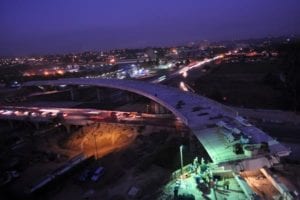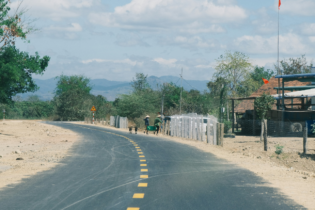The Chota Motala interchange straddles the N3 freeway as a major access route to the Pietermaritzburg CBD.
The interchange had been operating at above capacity for quite some time, evidenced by long delays in traffic on the Chota Motala Road (R33). Of even more concern was the dangerous situation created by the backing up of traffic on the off-ramps from the freeway, resulting in through traffic on the N3 suddenly being confronted by stationary traffic in the slow lane of the highway. After evaluating several interchange upgrade options, authorities settled on a concrete bridge over the N3, which would create a much-needed third layer of traffic at this busy interchange. Sanral and the Msunduzi Municipality then appointed Aurecon, in joint venture with Illiso, for the detailed design of the upgraded interchange, with Aurecon responsible for all bridge work.The main determining factor in the conceptual design for the bridge was the client’s requirement that any new bridge over the N3 had to be constructed without disrupting or endangering the heavy traffic on the N3 freeway. It was for this reason that Aurecon proposed the construction of an incrementally launched bridge. The incrementally launched construction method involves construction of the bridge superstructure section by section on one side of an obstacle and then launching them sequentially into their final position. Although this technique has been in use for approximately 50 years – the first post-tensioned concrete bridge constructed by launching is believed to be over the River Caroni in Venezuela in 1963 – this type of structure continues to be demanding in both the design and construction.
“The incremental launch technique was considered ideal for this situation,” comments Aurecon project manager Hennie Niehaus. “With very little risk of disrupting traffic at any stage during construction, it met the client’s requirements in every respect.” Reinforced concrete was deemed to be the logical choice of construction material for the Chota Motala Bridge as it offers the lowest initial construction cost and lowest life cycle maintenance costs. The only alternative was a launched composite deck involving the launch of open steel box girder over the whole length of the bridge and casting a concrete slab on it at a later stage.







